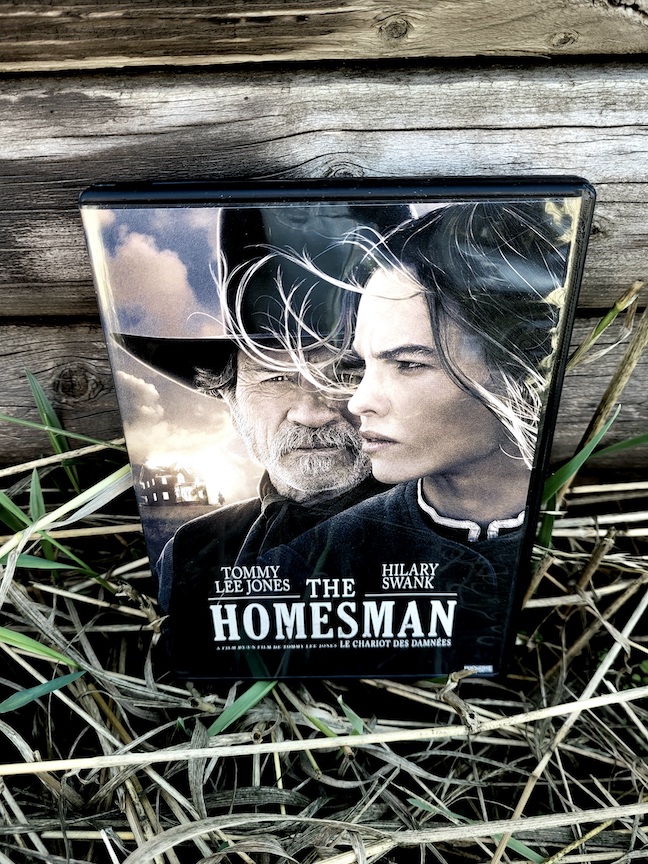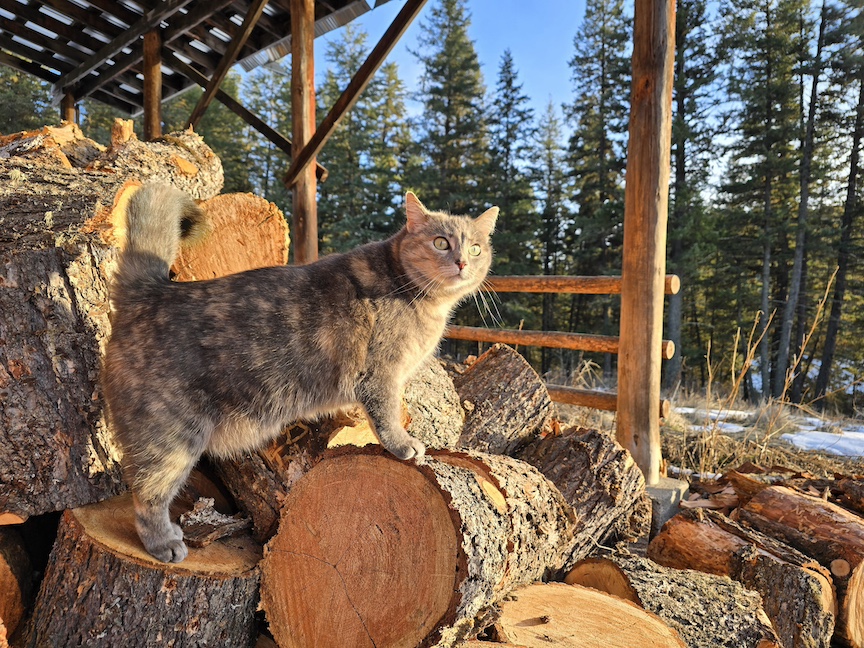Starring: Hilary Swank, Tommy Lee Jones
Director: Tommy Lee Jones
Released: 2014
Mood: If you had a great week and feel emotionally resilient like you can handle a strong female-driven Western about dark subjects that will mess with your headspace.
This movie sure as hell wasn’t what I was expecting. The Homesman is not a Western you should casually throw on at 10pm to keep yourself awake to greet your partner coming off afternoon shift.
Oh, you’ll stay awake. But you won’t be a cheery welcome wagon.
TW: rape – I refer to it here because it’s shown in the movie and is central to the plot.
TW: suicide – if you plan to watch the movie, you should know about that, too.
The Homesman looks like a powerhouse Western starring Hilary Swank and Tommy Lee Jones, and it’s definitely that. It’s a seriously impressive piece of work for both actors. But I was expecting something like The Missing crossed with Jane Got a Gun, and it’s far, far from that.
The streaming plot summaries, DVD jacket, and most online descriptions say it’s about women who are “driven insane by the hardships of the frontier” – let me tell you, that is putting it REALLY f*cking lightly. In two cases, those ‘hardships’ are rape by their husbands.
It’s an excellent movie. It fills you with the same inescapable sense of hopelessness felt by its characters. You get appearances by John Lithgow, Barry Corbin, Tim Blake Nelson, Hailee Steinfeld, and Meryl Streep – this is a heavy hitter. You just have to be emotionally ready to handle it.

The Homesman opens on the fallow fields of the Nebraska Territory, in the early days of settlement. Right away, you’re struck by the vast sparseness of the land.
At first it bounces back and forth between perspectives. You see the warm interior of pious Mary Bee Cuddy’s successful ranch, where she serves a man dinner and fusses over him. It cuts to drab glimpses of darker homesteads, and women who are suffering the extremes of the region: harsh winter, isolation, death, starvation, and their obligations to their husbands.
This is where you’ll see shocking scenes involving rape and infant deaths, because these women were expected to produce and raise big families to grow the settler population, and failure to do so was failing your husband, community, and faith.
Three women are clearly being driven over the edge. Miss Cuddy (Hilary Swank) proposes to her guest, who calls her too plain and bossy and rejects her. You can tell that these are words that hit hard, because she’s heard them her whole life.
Cuddy ends up elected to escort the women on a months-long journey to Iowa, where there’s a church that takes in unwanted women. She’s not alone – she happens upon a grizzled old claim jumper (Tommy Lee Jones), and frees him from a noose in exchange for his skills.
You think this odd couple will overcome great challenges and learn from each other, because that’s what Hollywood has taught us. Holy shit, is that the wrong impression. There’s no happy ending; it continues in a dark, matter-of-fact style that includes a horrifically shocking twist and a brutal revenge murder.
![]()
Honestly, all of the main performances in The Homesman, from the leads to the ‘crazy’ women, are done so well that words don’t do them justice.
Hilary Swank expertly delivers the most complex character of the bunch. Mary Bee Cuddy is equal parts fiercely independent rancher and desperate, rejected woman who just wants a partner in life. You watch Swank battle these two sides of Cuddy, growing increasingly overwhelmed yet stubbornly sticking to her cause.
I can’t say that her character was relatable or that I understand what even happened, but Swank kept me totally caught up in her struggle; I was captivated by every moment she was on screen.
Tommy Lee Jones seems born to play unique Western roles, and to direct them. Although he kept his character in the background of the women’s stories, he also became the most fascinating performance. He subtly delivers more zigs and zags than you’d think possible:
- George Briggs starts out as pathetic and weak
- Then he becomes rough and money-driven
- Then he reveals hints of a buried compassion for women
- Suddenly you’re hit with a lawful evil deed
- Then a shockingly sweet gentleness
- We end up disappointed
You get hints of Jones’ noble journey in the final part of Lonesome Dove. But when the end credits roll you’re caught off guard, because it’s such a low note. Like, everything is actually worse than it was before?!
Of the other big names I mentioned in The Homesman, Barry Corbin has the shortest appearance but makes the biggest impression. That man could fill you with warmth on even your worst day, and his brief encounter with Mary Cuddy before she departs is fully loaded with all the feels.
![]()
While the acting is stunning, the cinematography and score also play huge parts in why you feel so wretched after watching The Homesman. You get all these wide scenic shots that look miserable and unliveable. Like there’s no way anyone could survive there, how do people live in cities there now? You can barely survive watching the movie, so you’re right in there with how the characters feel.
The score is so well done that you don’t notice it – it guides your feelings without standing out. It includes a lot of wind sounds, which were apparently created to take all the warmth out of the music, to evoke the constant lack of proper shelter from the elements on the plains, and to capture the feeling of being overpowered.
The Homesman earned a ton of award nominations and a few wins, mostly for Swank and Jones but also for the script, score, and strong use of a women’s ensemble.
It’s still an uncomfortable linear journey that’s REALLY hard to watch. There were several times where I caught myself almost looking away, and thinking did you really have to show that? But yeah, they did.
With so many decades of pop culture romanticizing the Old West through movies, books, and TV shows – the very stuff this website is built upon – people like me need to be reminded that frontier life wasn’t all Rio Grande. It was really f*cking hard, and a lot of people died extremely unglamorous deaths like disease, starvation, farming accidents, falling off horses, horses falling on them, horses kicking them in the head, stampedes… remind me again, why do I ride horses?
Anyway, The Homesman has been called a feminist Western because it shows how incredibly hard it was (and is) to be a woman and meet everyone’s expectations but keep your mental health intact. These untold stories of women’s frontier life are actually what inspired author Glendon Swarthout to write the book that became the film.
Grab a pet, a loved one, a stuffed animal, all of the above – whatever will help you get through this movie. It’s a Western perspective that we need. I just couldn’t shake the bleak vibe for several days afterward.


